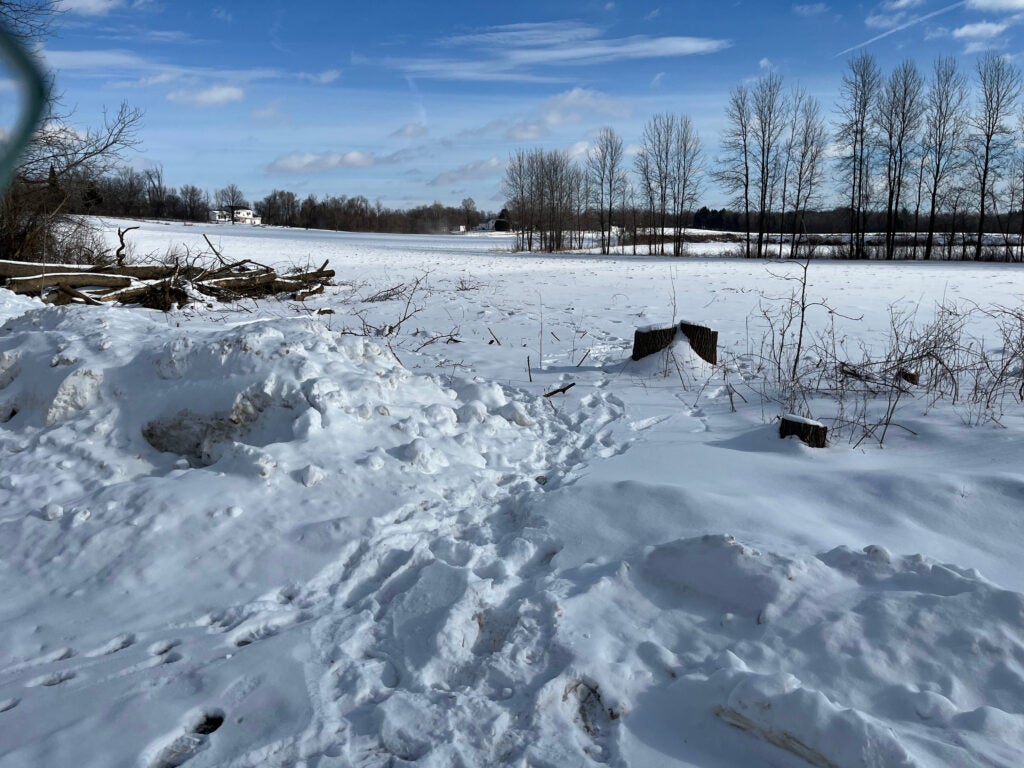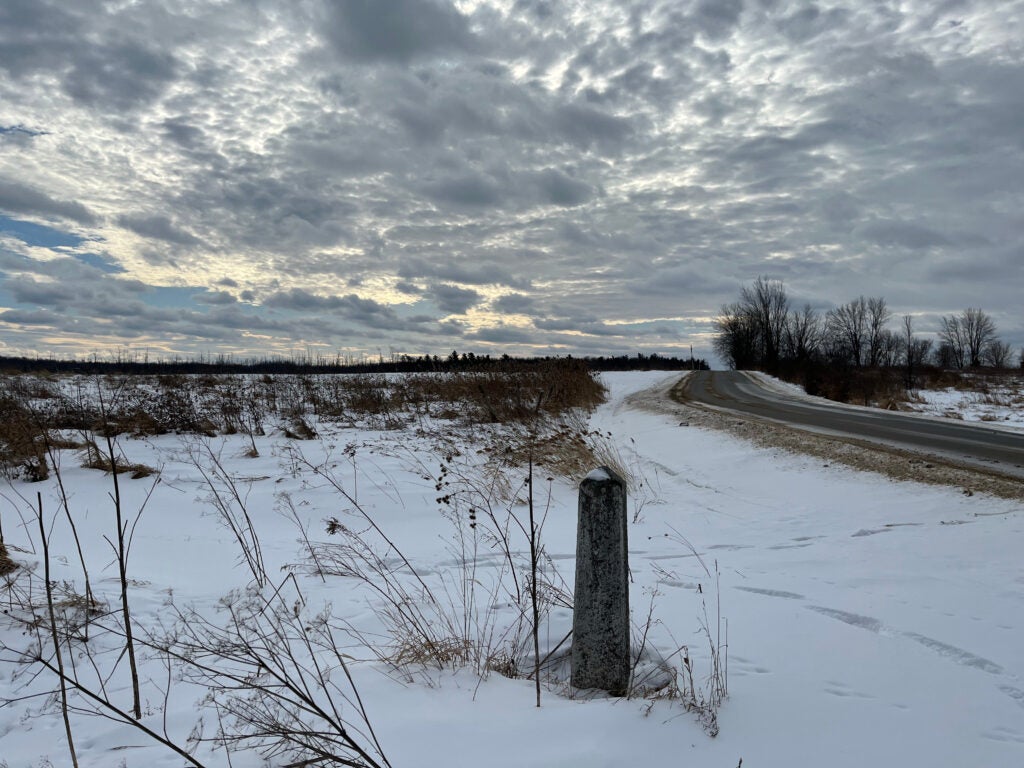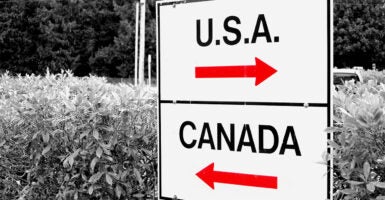A damaged pickup truck with no lights sped past me in the opposite direction in the middle of Malone, New York, up on America’s northern border with Canada. It was 5 p.m. on a dark winter evening, and the truck was going about 60, throwing off sparks and burning plastic. At least eight police cars were in pursuit. Seconds later, the 27-year-old driver crossed over the road and hit a stone monument. Amazingly, though he hit many cars on his mad ride, the guy didn’t kill anyone.
Even more amazing: This criminally reckless driver had done the same thing just two days before. On Jan. 19, he stole a Chevy truck and caused “multiple wrecked vehicles” while police chased him at high speed. According to local press, “He was arrested, arraigned, and released” thanks to New York’s lax bail law. Two days later, he came close to killing even more people. Including me.
This story illustrates how elites and anti-law-enforcement voters in far-off big cities determine the fates of rural and small-town Americans. It also shows how enforcing the law—arrests and detentions in particular—is effective in deterring law-breaking, including illegal immigration.
I was in Malone to see the security of the northern border for myself—unlike President Joe Biden or Border Czarina Kamala Harris.
I spent a day looking at signs of illegal entry into the U.S. in Burke Station, one of eight stations in the Swanton Sector of the U.S. Border Patrol. On the southern border, hundreds of illegal aliens cross at a time, but groups up north are small. They come in a steady stream, though, guided by traffickers and phones, communicating through social media.
With a 12 inches of snow on the ground, we saw many places along the border where groups had recently crossed into the U.S. on foot. Sometimes, they are seen on cameras and met by the Border Patrol, only to be released shortly thereafter. Just as often, they are met by amateurs hired by organized alien smugglers who spirit them southward in their personal cars.

Customs and Border Protection logged 189,402 encounters with inadmissible aliens at the northern border in fiscal year 2023. The vast majority of these, including 484 on the terrorist watchlist, were foreigners applying to get in at formal ports of entry who didn’t have visas or for some other reason weren’t authorized to enter the U.S. But an increasing number of aliens try to sneak in around the official entry stations manned by Customs and Border Protection.
In 2021, there were only 916 people trying to sneak across the Canadian border between ports. But in 2022, those encounters jumped to 2,238. With Biden’s catch-and-release, the number increased to 10,021 in fiscal 2023. We’re likely to exceed that in 2024.
In the last three months of 2023 alone, the Border Patrol reported 3,846 aliens entering the U.S. from Canada between ports. They came from over 60 countries.
Of the eight U.S. Border Patrol sectors on the Canadian border, Swanton has the highest number of illegal crossers—10 times as many as the neighboring two sectors combined, approaching 3,000 encounters already in the first quarter of this fiscal year. That’s not counting the many who were spotted and got away.
This might not sound like a lot compared to the deluge on the southern border, but 20 years ago, there were 1,955 total encounters for Swanton in an entire year, and they’ve already seen more in the first three months of this year. Fiscal year 2023 saw close to five times the number of illegal crossers from Canada as 2020.
The northern border is incredibly easy to get across. Montreal, Canada’s second biggest city, is only 50 miles north of Burke Station, and more than 90% of Canadians live within 100 miles of the United States. There are plenty of smuggling operations working to move people and contraband across the border.
There were few Border Patrol agents per mile to begin with, but Homeland Security Secretary Alejandro Mayorkas has been shifting some away from this border for “voluntary” details on the southern border—not to patrol, but to process more illegal immigrants into the U.S. The remaining northern agents are spread too thinly even to perform their assigned function under the lax Mayorkas priorities, which is to catch them at the border and release them into the U.S.
In December alone, 1,608 Mexicans came in illegally from Canada. You might wonder why they take this longer route. This is probably because Mexicans don’t need visas to enter Canada, only an online travel authorization. Then from Canada, they can enter the U.S. and easily evade the under-resourced Border Patrol.
Other than the ease of entry, I took away two other major observations from this trip up north.
One is the scale. The largest Border Patrol sector on the Canadian border, Grand Forks, covers 861 border miles and eight states. In square miles, it is four times the size of Italy. For this, they have just over 200 Border Patrol agents. Given about a third are on duty at any time and some are on leave, we’re talking about maybe 60 agents on duty at a time.
Swanton Sector has 24,000 square miles and covers all of Vermont and parts of New York and New Hampshire, stretching over 295 miles of border. Swanton’s Burke Station started in 1957 with eight agents and one supervisor. That increased over time to a high of 30 agents but is now down to 21 (with seven supervisors).
This handful of agents is responsible for a vast, flat expanse of land and water. Until you’ve seen it, you can’t grasp how utterly open this border is. There are roads with nothing but a small marker that looks like a mini-Washington Monument to tell you where the U.S. stops and Canada begins. Drivers from Canada can ride across unimpeded and are bound only by the honor system to check in at the nearest Customs and Border Protection post. It’s obvious many do not—I saw several cars that did not head toward the official port of entry.

Much of the border is on private land, but there is also the St. Regis Mohawk Indian Territory, which abuts Canada northwest of Malone. The reservation is a major conduit for smuggling, and U.S. law enforcement has a limited scope of authority.
There isn’t even one Border Patrol agent for every 10 miles of border, and there is no fence to channel illegal crossers and make the patrol more efficient. Without a barrier, one Border Patrol expert testified that they need one agent per mile.
My last take-away from my trip to the northern border is that illegal immigrants respond to information and incentives like anyone else. Knowing they will be released into the United States upon arrival is what draws them.
Recently, groups of Indians (from South Asia) were coming over in organized fashion. They went from India to Canada, were guided across the border, and were received on the U.S. side by alien smugglers. These groups had already made motel reservations in Malone. They knew that they’d be nominally arrested by the Border Patrol, processed, and then given a ride to their motels and left free to roam the country until their immigration court date—sometimes years in the future.
But once Border Patrol was given permission by Department of Homeland Security headquarters to detain them, the free ride turned into consequences, and the Indian groups stopped exploiting the northern route.
Detention and enforcement work on the northern border as well as the southern. Until we adequately staff and task the Border Patrol to do those things, incursions into our country will continue to increase from both the north and the south.
The BorderLine is a weekly Daily Signal feature examining everything from the unprecedented illegal immigration crisis at the border to immigration’s impact on cities and states throughout the land. We will also shed light on other critical border-related issues like human trafficking, drug smuggling, terrorism, and more.
Read Other BorderLine Columns:
No Such Thing as a Free Lunch: The Cost of Unchecked Illegal Immigration on Americans
Concerns About Proposed Senate Border Security Compromise
Biden’s Border Madness Has Cheapened What It Means to Be an American
Nazi Name-Calling Is the Last Refuge of the Progressive
Chicago Mayor Lashes Out as Illegal Aliens Flood His Sanctuary City
Have an opinion about this article? To sound off, please email [email protected], and we’ll consider publishing your edited remarks in our regular “We Hear You” feature. Remember to include the URL or headline of the article plus your name and town and/or state.




























